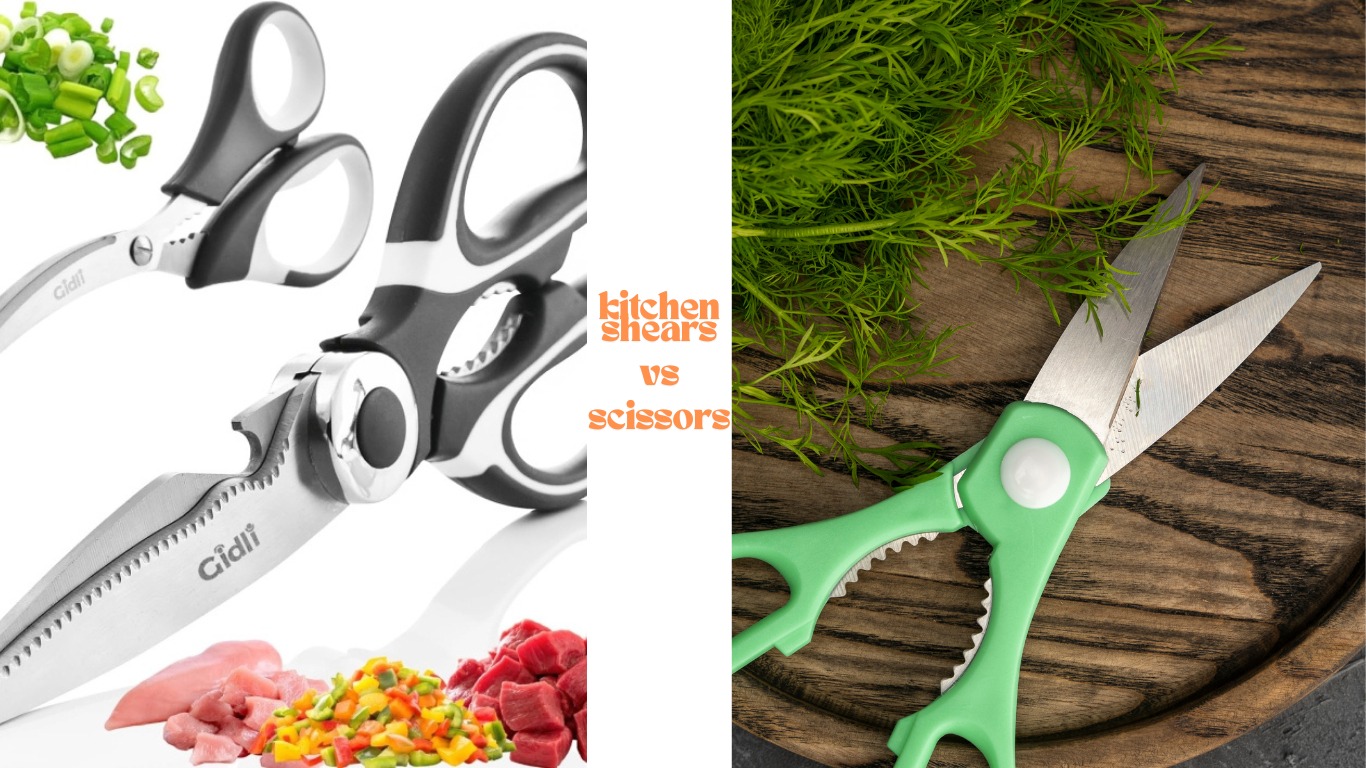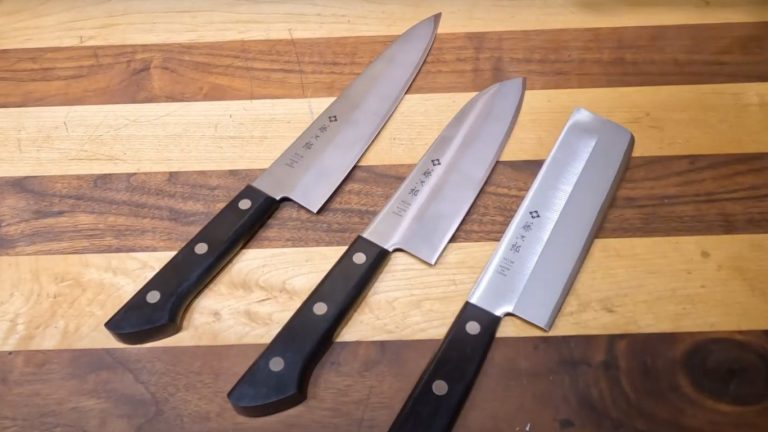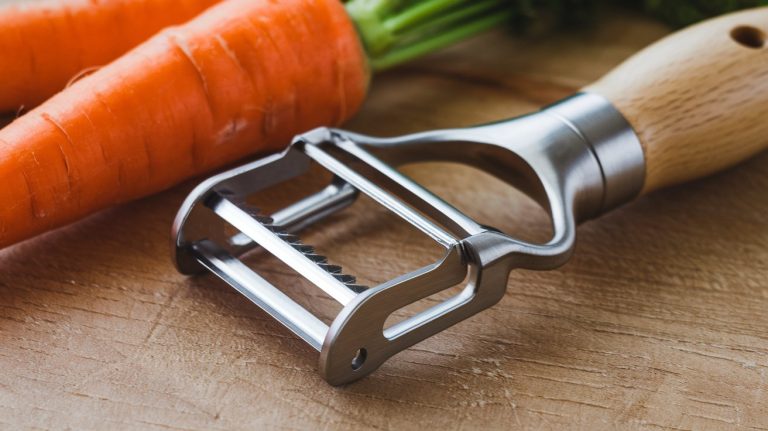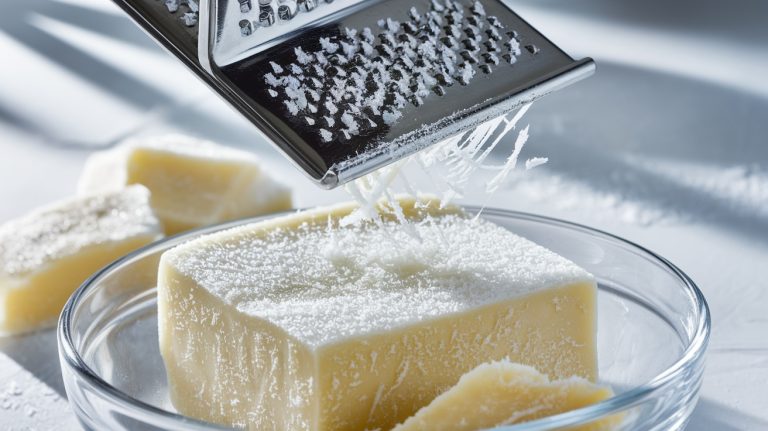Kitchen Shears vs Scissors: Know the Difference Before You Cut
When you’re prepping food, it’s essential to know the difference between kitchen shears and scissors. Shears are designed for heavy-duty tasks, cutting through meat and poultry with ease.
They feature longer blades, ergonomic handles, and often include micro-serrated edges for better grip. Scissors, on the other hand, are more suited for lightweight tasks like cutting paper or herbs.
Knowing how to use each tool effectively can enhance your cooking efficiency and safety, and there’s more to discover about their unique features.
Key Takeaways
- Kitchen shears are designed for heavy-duty tasks, while scissors are suited for lighter, everyday cutting needs.
- Shears have longer, more durable blades made from high-carbon stainless steel, whereas scissors usually have shorter, less robust blades.
- Shears excel in cutting tough items like raw poultry and vegetables, while scissors struggle with such materials.
- Kitchen shears often feature micro-serrated edges for better grip and control, while scissors typically have smooth blades.
- Shears are often dishwasher safe and designed for easy cleaning, while scissors require more careful maintenance and are not usually dishwasher safe.
Understanding Shears and Scissors
When it comes to kitchen tools, understanding the difference between shears and scissors is essential for effective food preparation.
Shears are designed for heavy-duty tasks, making them more specialized than scissors. Typically made from high-quality materials like high-carbon stainless steel, shears excel at cutting through tough kitchen items such as meat, poultry, and vegetables.
Their versatility extends to tasks like trimming herbs and preparing fish, solidifying their role as a kitchen staple.
Kitchen shears can handle wet and slippery foods safely, providing an advantage over regular scissors. Additionally, their micro-serrated edges enhance grip on slippery items, ensuring secure cuts every time.
Shears are essential kitchen tools, expertly designed for heavy-duty tasks like cutting meat, poultry, and vegetables.
To maintain their cutting edge, proper care is necessary, including regular sharpening and appropriate storage.
Key Design Differences
Understanding the specific design differences between kitchen shears and scissors can greatly influence your cooking experience.
Here are four key distinctions to keep in mind:
- Blade Length: Kitchen shears typically boast longer blades, over 6 inches, while scissors have shorter ones.
- Blade Material: Kitchen shears are crafted from robust, high-quality steel, ensuring durability and sharpness. This durability and strength allows them to handle tough food items that regular scissors cannot manage.
- Serration: Many kitchen shears feature micro-serrated edges, providing better grip for cutting food.
- Ergonomic Handles: Kitchen shears often have larger, more comfortable handles designed for ease during extended use.
Functionality and Specific Uses
Functionality in the kitchen can greatly impact your cooking efficiency, and choosing the right tool is essential.
Kitchen shears excel at cutting through raw poultry safely and efficiently, streamlining your food prep. They let you quickly snip herbs directly in your mixing bowl, reducing the need for extra utensils.
With their serrated blades, these shears tackle tougher materials like meat and vegetables with ease. Moreover, they enhance efficiency in seafood preparation tasks and simplify cutting raw bacon.
Kitchen shears streamline food prep by cutting raw poultry safely and quickly snipping herbs, making cooking more efficient.
Plus, many models include additional tools like bottle openers and nutcrackers, enhancing their versatility.
On the other hand, scissors are better suited for lightweight tasks, such as cutting paper or fabric, and lack the multifunctionality required for heavy kitchen duties. They simply don’t measure up to the diverse functionalities kitchen shears offer.
Maintenance and Durability
To make sure your tools last, follow these essential maintenance practices:
- Cleaning: Wash kitchen shears with warm, soapy water and dry them immediately to prevent rust. Regular cleaning keeps scissors free from germs, contributing to safer food preparation.
- Sharpening: Regularly check and sharpen blades using aluminum foil or sandpaper to keep them efficient. For optimal results, use a knife sharpener rod to ensure uniform sharpening across the entire length.
- Storage: Store kitchen shears in a knife block or sheath to protect the edges; keep regular scissors away from moisture. Additionally, kitchen shears are often dishwasher safe, making them easier to clean after use.
- Inspection: Periodically inspect both types for damage or dullness, but kitchen shears need more frequent checks due to tougher use. Dull scissors may exhibit signs such as uneven cuts and increased effort while cutting, indicating the need for sharpening.
Safety Features and Considerations
Safety features and considerations play an essential role when using kitchen shears. Always cut away from your body and keep your hands clear of the blade’s path to minimize the risk of accidental cuts.
Safety is paramount when using kitchen shears; always cut away from your body and keep hands clear of the blade.
Maintain a stable posture and use a cutting board for better control. Remember, dull blades are more dangerous because they require extra force, increasing the chance of slips, so keep your shears sharpened.
Additionally, using kitchen shears specifically designed for various tasks can enhance both safety and efficiency in the kitchen.
Use designated shears for specific tasks and guarantee a secure grip to prevent losing control. Avoid loose clothing and distractions, and store your shears safely.
For child safety, teach proper techniques and supervise their use.
Frequently Asked Questions
Can Kitchen Shears Be Used for Non-Kitchen Tasks?
You might think kitchen shears are just for cutting herbs and meat, but you’d be surprised at their versatility!
They’re perfect for non-kitchen tasks like opening packages, gardening, or even crafting. With their durable, serrated blades and ergonomic handles, they can tackle tough materials and reduce fatigue.
How Do I Choose the Right Shears for My Needs?
When choosing the right shears for your needs, consider the blade material for durability and corrosion resistance.
Look for ergonomic handles that provide comfort and control during use.
If you plan to tackle heavy-duty tasks, opt for longer blades, ideally over 6 inches.
Assess the blade design for features like micro-serration to grip slippery items.
Finally, think about maintenance; separable blades make cleaning much easier, enhancing longevity and performance.
Are There Specific Brands Recommended for Kitchen Shears?
Oh sure, just grab any old pair of shears and call it a day, right?
But if you truly want to elevate your kitchen game, consider brands like Shun or Miyabi for their sharpness and durability.
Kai Pro’s micro-serrations are perfect for slippery tasks, while KitchenAid offers heavy-duty options without breaking the bank.
Each brand brings unique features, so pick wisely to guarantee your culinary adventures are both efficient and enjoyable!
Can I Sharpen Shears and Scissors at Home?
Yes, you can sharpen shears and scissors at home using basic tools. A sharpening stone with coarse and fine sides works best.
Start with the coarse side, then refine with the fine side. Disassembling kitchen shears can make access easier.
After sharpening, make a few snipping motions to align the blades and guarantee they cut effectively.
Just be careful not to over-sharpen or damage the edges during the process to maintain their performance.
What Is the Best Way to Store Kitchen Shears?
To store kitchen shears effectively, consider using a protective sheath or case to prevent cuts and keep blades clean.
A magnetic strip mounted on the wall offers easy access while saving drawer space. Alternatively, a dedicated holder can enhance organization.
Implementing drawer organizers keeps shears separated from other utensils, preventing damage.
Always guarantee your storage solution minimizes risks, especially in homes with children, while maintaining the shears’ sharpness and longevity.
Snip Smart: Your Culinary Tools, Your Kitchen Story
In choosing between kitchen shears and scissors, the decision hinges on your specific needs and culinary habits. Do you value versatility or specialized performance?
Consider how each tool’s design enhances your cooking experience, from snipping herbs to cutting poultry. As you ponder your options, remember that the right choice can elevate your kitchen efficiency.
So, which tool will you reach for next, and how will it transform your culinary adventures? The answer may surprise you.







